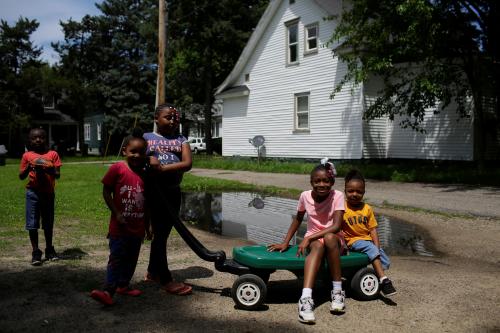The Congressional Budget Office (CBO) report released earlier this month offers a clear picture of the costs of the Build Back Better Act (BBBA) to America. Yet, the report fails to account for the longer term payoffs of investing in a social and economic package that would dramatically change the landscape for children. Millions of jobs would be created in child care and preschool, women would be more likely to enter the workforce in large numbers, and we would likely have a more educated workforce better prepared for the jobs of tomorrow.
The scientific and economic data tell this part of the story.
A recent Economic Policy Forum projection shows a gain of nearly 2.3 million jobs on average, per year, for the first five years of the BBBA—including jobs directly in the child care and education sectors and among support industries, like child nutrition and public housing. In fact, 17 winners of the Nobel Prize in economics point to the supply-side nature of the plan as a benefit that would reap large dividends in years to come. Canada’s investments in child care, for example, generated 200,000 new jobs in the child care sector (plus 100,000 in related support industries), and nearly $30 billion per year in government revenue from tax dollars.
Right now, the economy loses more than $50 billion per year in revenue, wages, and productivity due to persistent child care problems.
These job gains are especially important for women, who were, proportionally, pushed out of the workforce—either to care for their children because of the COVID-19 pandemic or simply because the cost of child care outpaced their earnings—at rates far greater than their male counterparts. Having affordable access to high-quality child care helps parents, especially mothers, get back to work and it increases take-home earnings.
Right now, the economy loses more than $50 billion per year in revenue, wages, and productivity due to persistent child care problems.
Finally, children benefit from high-quality care. Meta-analyses of more than 20 studies show that high-quality early child care and education (ECE) can reduce enrollment in special education programs and increase graduation rates. Further, a recent National Institute of Child Health and Human Development study of early child care and youth development also points to benefits across the lifespan: ECE is associated with higher graduation rates and earnings in early adulthood. In fact, economic research suggests returns on investment in educational attainment, employment, and health outcomes ranging from $4 to $13 for every $1 spent.
The science strongly suggests that investing in early childhood has a meaningful impact on life outcomes. Indeed, it could be argued that investments in early childhood education generate the biggest return on investment of any sector in the human enterprise.
To date, America comes last in its support of families. It comes last in providing family care, ranks the third lowest in pre-K enrollments (with no current universal system in place), and falls in last place in supporting families throughout the early childhood years. A recent UNICEF report showed that America ranked nearly last out of 38 advanced countries on a series of child wellness markers. Put bluntly, America has a tortured history when it comes to caring for children and families.
As scientists who have the long-range vision to look at children and the adults they will become, we hold that the original CBO report is somewhat shortsighted in only taking the 10-year view and is limited in not examining the revenue created by having more and better prepared people in the workforce.
A follow-up report issued on November 23 offers a glimpse of these real economic effects of child care and universal pre-K on families and the economy. This report acknowledges that parent income would likely go up and that women’s employment would likely go up. Yet, even here, the arguments are largely centered on a current tax revenue system rather than fully examining the increased social and economic (taxes included) capital that would be created if there were more jobs, more parents (mostly women) in the workforce, and more highly educated children.
Perhaps the CBO could expand its work to generate an economic model offering a “real” estimate of the gains society reaps by supporting families and the losses experienced when children and families are not supported.









Commentary
The ‘real’ economic advantage of investing in families this holiday season
November 30, 2021